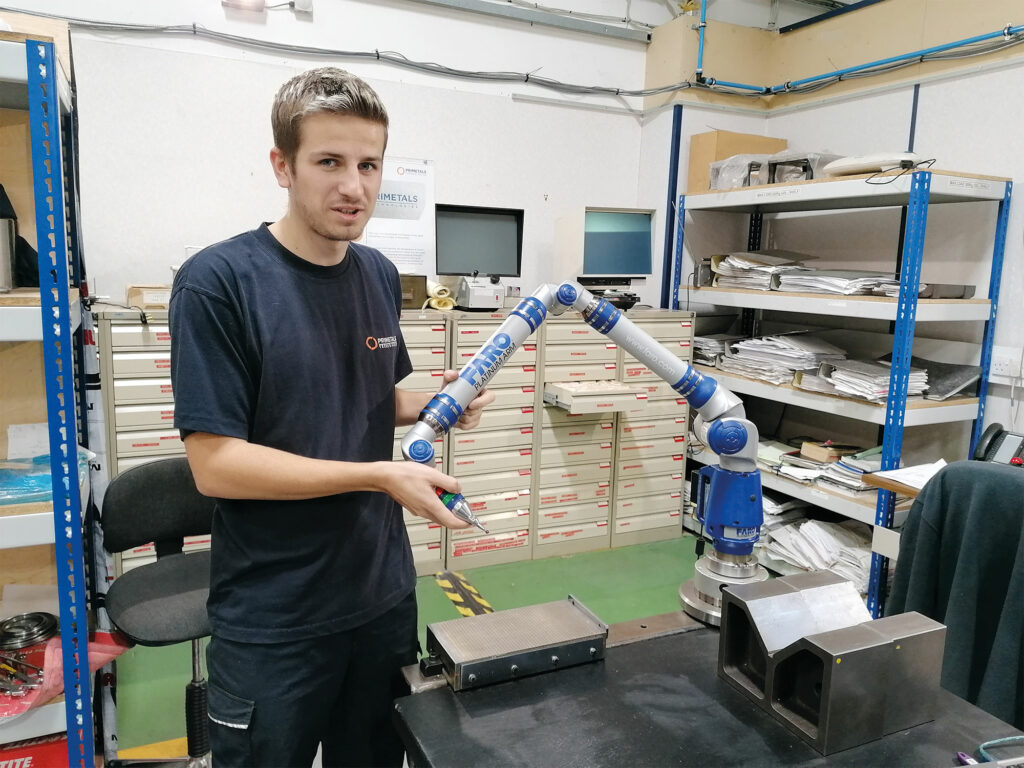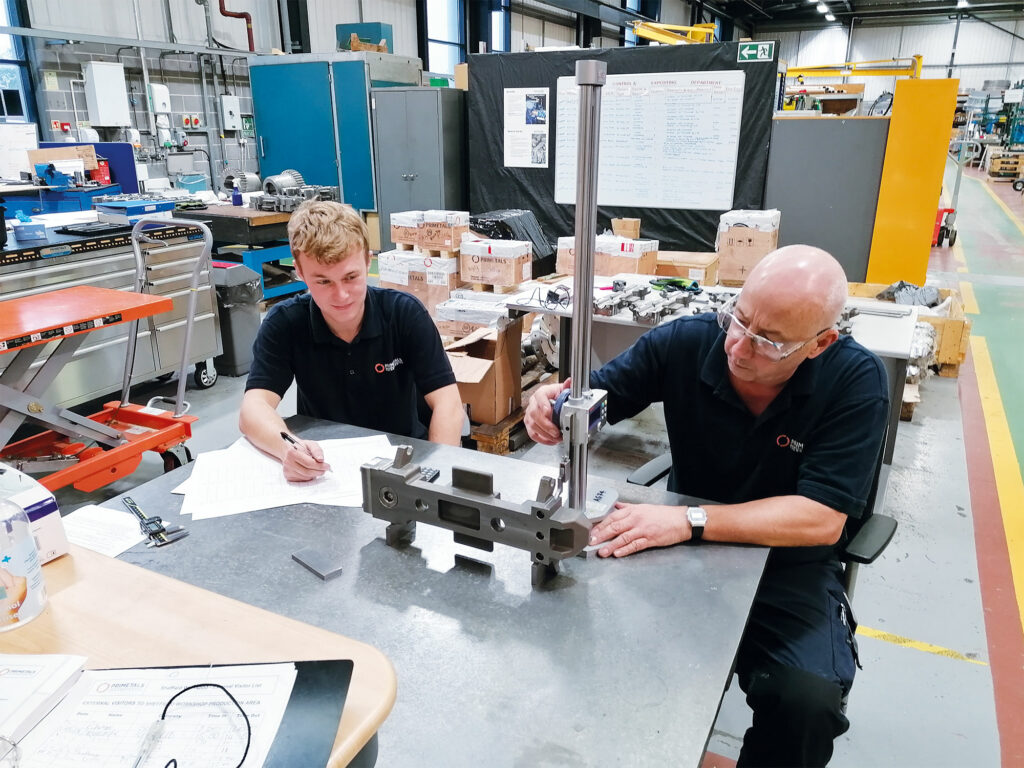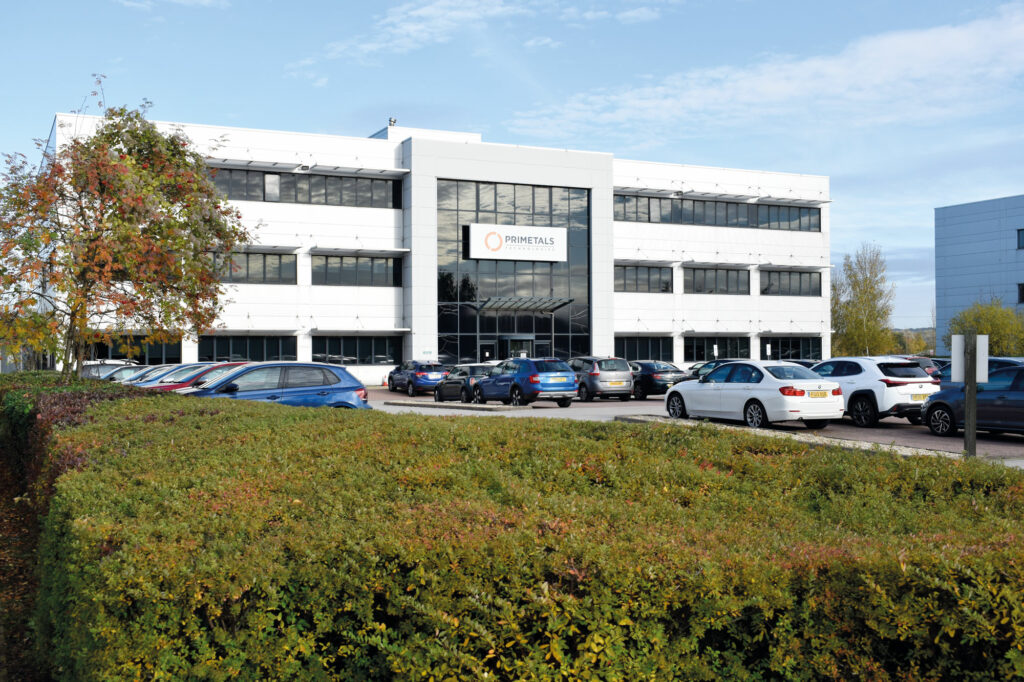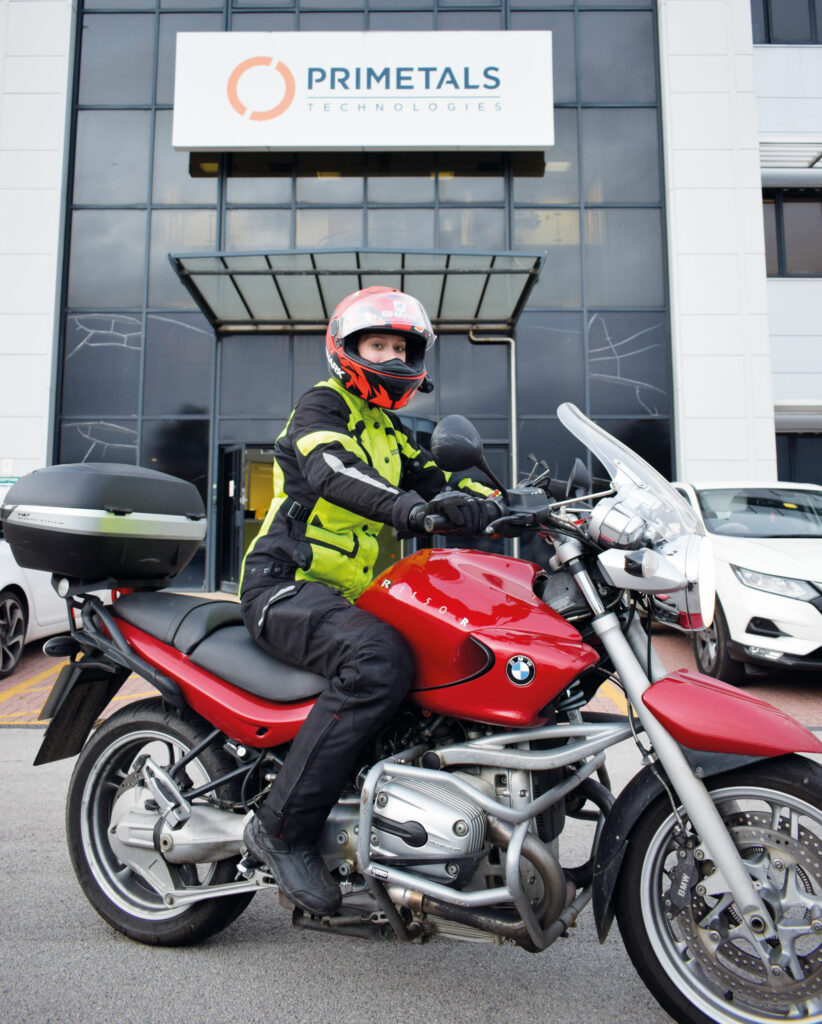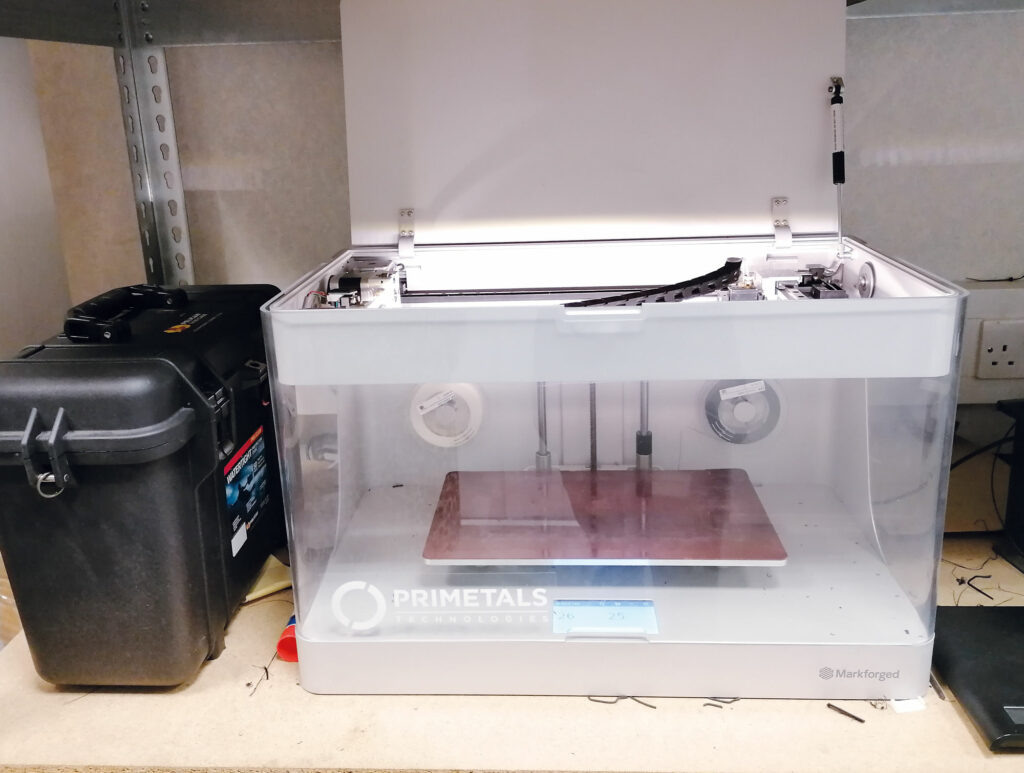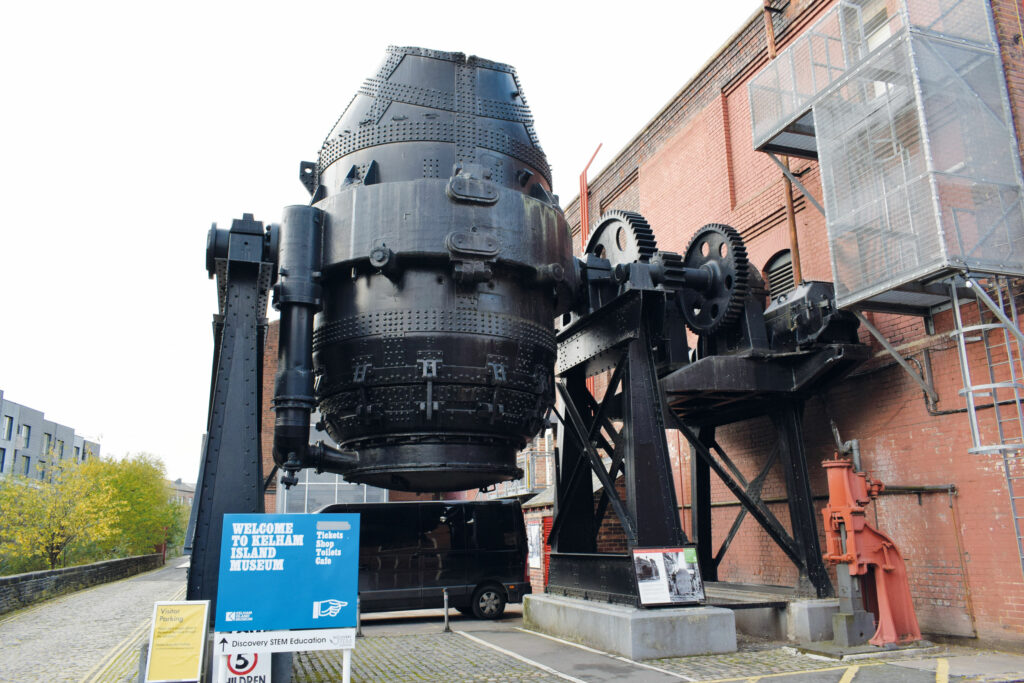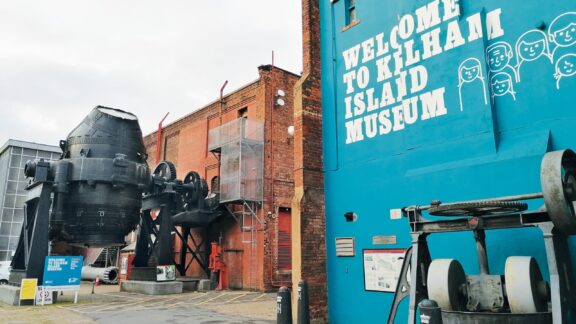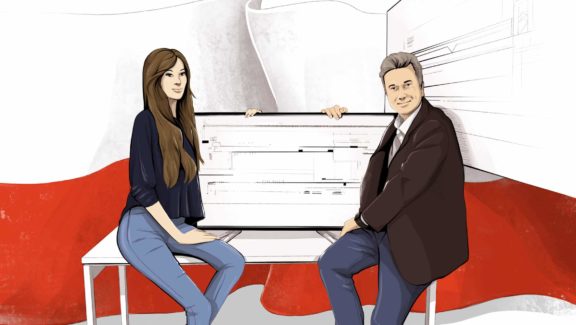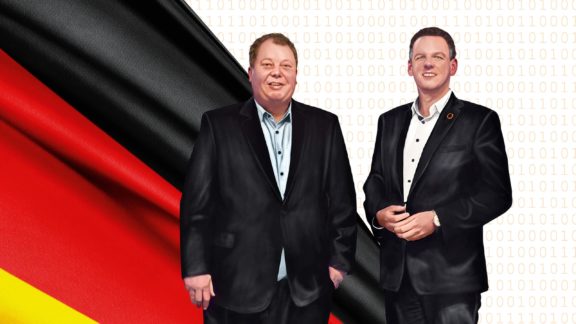Sheffield has been one of the cornerstones of British steel production for centuries. Rather appropriately, it is also home to the largest company location of Primetals Technologies in the U.K. About 175 engineers, project managers, sales experts, and services specialists cater to a global customer base—with solutions and support designed to point the way to the future of metals production. Metals Magazine’s Dr. Tom Widter reports from the “Steel Capital” of northern England that was famously built on seven hills.
“You simply have to! There is just no other way to get it right,” insists Paul Sherman. I first met Sherman four years ago when he was manager of the Christchurch location of Primetals Technologies in the south of England. These days, he runs the company’s Metallurgical Services division for the U.K. from Sheffield in South Yorkshire. Then, as now, his charisma and energy are incredibly infectious. But what is Sherman talking about so passionately? What is the insight he wants to share with me?
On Paul’s whiteboard is written a famous quote by ice hockey legend Wayne Gretzky: “I skate to where the puck is going to be, not where it has been.” This is Sherman’s philosophy for making business decisions in a nutshell. A pioneer at heart, Sherman knows that the metals industry requires business leaders to make smart, forward-looking decisions. You can’t rely on what worked yesterday; you need to focus on what’s to come. As I explore the Sheffield location of Primetals Technologies, I learn that this mantra holds true pretty much throughout. This place is all about anticipating what the world of metals will look like in the coming decades—in terms of technologies, innovations, and services. As far as staff count goes, it is the largest of the Primetals Technologies company locations in Great Britain, with some 175 employees. Within the wider company network, it plays a central role. Clearly, it is well worth a visit—even in times of Covid. Which of course begs the question how my journey went. “Did you get here okay?” Sherman asks.
Travel in times of Covid
The journey from Linz, Austria, to Sheffield has been neither easy nor straightforward. In the days leading up to my departure, I find that Coronavirus-related travel guidance is changing continually, meaning that I have to hastily book a “Day 2” Covid test—to be taken on the second day after my arrival—just hours before take-off. It is a requirement for obtaining the paperwork I need to enter the U.K. Add to that my printed vaccination certificates and a confirmation that this qualifies as a business trip—there’s a whole lot of prep work. When my plane finally lands at Manchester airport, I could not be happier or more relieved.
As I drive to the Sheffield company location for the first time, it strikes me that the steel industry has been a fixture in the region for generations. In these turbulent times, it is good to encounter moments of stability. Long before Primetals Technologies was formed in 2015, what is now the Sheffield location began life in 1837 as the Davy company—started by two brothers who were skillful and versatile engineers. After a few transformations and name changes, Davy was eventually bought by Linz-based VAI in 1999 and became part of Siemens six years later. Today, the location continues to play a central role in the U.K. operations of Primetals Technologies, with a reach far beyond the British market.
Having survived the ordeal of air travel, I find the drive from Manchester to Sheffield to be pure pleasure. It leads me through the Peak District—an area of stunning natural beauty that became the first of the national parks of England and Wales back in 1951. As I pass by grazing sheep, characterful old buildings, and the odd pub, I begin to appreciate the special atmosphere so unique to the region. Sheffield was built on the eastern foot of the Pennine Hills, and I can clearly see the benefits as I approach the city. Even today, some sixty percent of the greater Sheffield area is green space, with over 250 parks, woodlands, and gardens—if you enjoy nature, this is a great place to live.
My destination is a modern-looking building in the “Sheffield Business Park.” Its three floors house the offices for engineers, sales staff, and services specialists. Right next to it, you’ll find a workshop and an innovation center, which is pioneering 3D printing, video animation, and other technologies. This much I already know from earlier briefings. Curious to find out more, I park the car and ring the doorbell, which has been installed on account of Covid. Esther Edwards, marketing manager extraordinaire, has already been expecting me and lets me in. Most of the staff are now back at the office, she explains, especially those who work in Services. For a while, everyone was asked to work from home as much as possible. Talking to Edwards, I soon understand that, during my visit, there will be slightly more emphasis on the services side of things, as it is the most well-staffed at the time.
“Have you noticed that Boeing is one of our immediate neighbors?” Edwards asks. “It is their only manufacturing site outside of Seattle.” She explains that Sheffield is an advanced-manufacturing hub for numerous companies, including McLaren Automotive and Rolls Royce. “The University of Sheffield is partnering with many of the local businesses—with programs designed to teach students the skills they require to become the city’s future workforce, and with dedicated company-specific projects.”
Extraterrestrial Design
One employee who came to Primetals Technologies directly from university is Rhodri Evans. Together with his colleague Peter Kilham, Evans is on a mission to bring 3D printing to the metals industry. Some of Evans’ many creations are spread out on a large table. They look otherworldly, almost alien—as if they have come from a distant future and traveled through a time tunnel. “This is the design for a swing arm,” Evans says as he picks up something that is eerily similar to tree branches, only they have grown together in a way you would not expect: the structure of the piece resembles that of a network of asymmetrical rods of varying thicknesses that somehow chose to form a strange union.
Evans tells me that there are several principles in which additive manufacturing is different from the traditional subtractive approach. Had Evans constructed the arm the “old” way, he probably would have cast it in steel or aluminum. Once out of the mold, the arm would have been machined. Evans would have drilled some holes, cut away unnecessary parts, and softened the edges. Each manufacturing step would have introduced additional labor, with significant build-up of waste from everything that had to be subtracted after casting.
But additive manufacturing has revolutionized the process: “Roughly speaking, we create our designs in the computer based on analyses of the distribution of stress inside that particular part,” Evans explains. “So what you, Tom, just referred to as ‘tree branches’ is effectively the physical representation of the strain we expect this part will have to handle.” In other words, the arm was built to its precise purpose and designed to deal with the real-world stress it will be experiencing, with minimal labor and no wasted material.
“Were these all made from plastic?” I ask Evans. “Actually, it is a mix of nylon and carbon fiber,” he answers. “There are different types of nylon, and we can embed fiber-glass inlays if required.” Another technique that Evans may apply in future uses plastic with metal particles—aluminum, stainless steel, or titanium—as the base material; this approach would then let him create aerospace-grade products. “We use one kind of material per layer, and each layer is 0.1 to 0.8 millimeters thick, depending on which printer and which settings we use.” The team currently has two printers at its disposal. The smaller of the two can comfortably fit on a desk, while the larger one is about two meters in height and could easily accommodate a small person.
What makes me
proud to be British …
Employees of Primetals Technologies share many passions, such as pioneering new solutions for their customers. But every location also has unique qualities. In this section, we catch a glimpse of what makes the U.K.’s north so special.
I am proud of both my Indian heritage and to be a British citizen. I value the three pillars of our inclusive society: justice, fairness, and safety.”
Sandip Samanta
Head of Technology
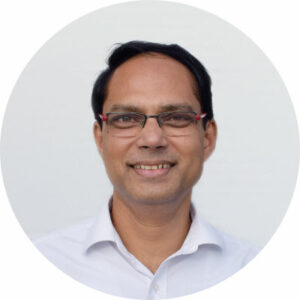

I feel that we are a friendly nation, especially in the north, where I live.”
Heather Woods
HR Business Partner
I like our countryside and how quickly you can get there from the towns. I am also fond of our many accents. We are a very diverse nation on many levels.”
Barry Clay
Sales Manager

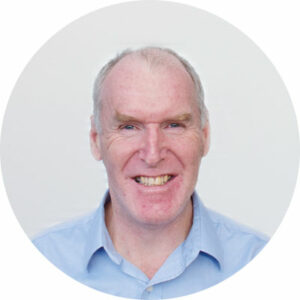
In spite of parts of the U.K.’s population complaining, I believe that we are actually a very well looked-after country.”
Stuart John Leflay
Senior Expert
We have a huge history of engineering in Britain, and Sheffield can be seen as the nation’s steel capital. Plus, I am quite fond of our fish and chips.”
Joanne Loveday
Senior Design Engineer
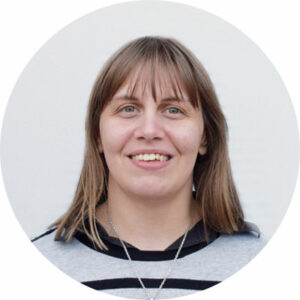
Manufacturing, re-imagined
Evans says that, for now, he has mostly been focusing on the production of prototypes of spare parts. “Eventually, additive manufacturing will allow for in-depth system optimization—meaning that we’ll be able to redesign parts to become the ‘right tool for the job’ and to be much less heavy and bulky.” 3D printing, he goes on to say, not only results in lighter parts but also allows for the inclusion of built-in pneumatics and sensors—in places they could not have been added before.
3D printing, it seems to me, will soon change everything about how parts and products are designed and manufactured. Evans agrees. “There is only one thing that 3D printing can’t do: it cannot defy gravity,” he says. It turns out that if you were to manufacture a windowed wall, you would have to manually put in the top end of the window frame so that the printer could then use it as a new foundation and continue producing the wall. It can’t print on air. In spite of this shortcoming, by the end of his demonstration, Evans has me convinced that the additive manufacturing revolution will be all-pervading. “I feel like once 3D printing takes off, it will create a whole new distribution channel for spare parts … a true next-level thing,” I tell Evans, who nods enthusiastically.
Right on cue, Services chief Paul Sherman enters through the lab’s rear door. “Have I missed anything?” he asks, and I can’t even begin to fill him in. Of course, Sherman himself was responsible for installing the lab equipment, and he knew exactly what he was doing and what he was aiming for. We walk to Sherman’s office, where he tells me that the services sector has grown quite a bit over the years and will likely continue on this trajectory, with all the positive implications for the Sheffield location you would expect. The metallurgical services provided by Sherman’s team range from maintenance work to the provision of spares and the reconditioning of production equipment. With a smile, Sherman then invites me on a tour of the workshop.
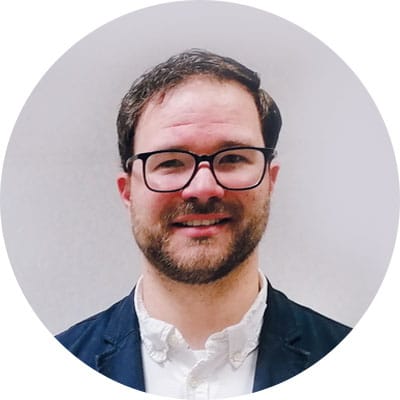
Interview with
Rhodri Evans
Rhodri Evans is Senior Design Engineer at Primetals Technologies. He is pioneering the use of additive manufacturing in Sheffield.
In your view, is creativity something you are born with, or something you can learn?
Evans: I think it is acquired through life experience. Training can only get you so far, and it’s the life lessons that make the difference. You also have to have the desire to find new solutions.
Are there any “tricks” you use to promote creativity and inventiveness?
Evans: I like mind challenges and puzzles such as the Rubik’s Cube. I use the cube to give my mind a little warmup into “problem solving mode” by first doing a puzzle before I proceed to work on a technical issue.
Is there any new technological area you are particularly fascinated by?
Evans: Advanced manufacturing, because it means solving old problems in new ways. For example, advanced casting techniques that rely on 3D-printed sand molds enable the casting of complex forms that were not feasible before.
Is there any inventor, scientist, or entrepreneur that you admire?
Evans: I have two. British inventor and engineer Isambard Kingdom Brunel, who crafted various famous British pieces of infrastructure such as the Great Western Railway. The other is Elon Musk, because I find his approach toward problem solving refreshing. I appreciate the way he pushes new technologies forward.
Spare parts large and small
Said workshop is split into two organizational halves: the left side is largely dedicated to servicing long-rolling production equipment, while the right side takes care of everything flat. For now, the “long products” section is the busier one, but that is expected to change over the next few years. Sherman introduces me to Kyle Bowskill, the workshop’s quality-control team leader. Modesty is one of the hallmarks of the British—and especially of the English—mentality, and while Bowskill is almost too humble to instruct me on the correct spelling of his name, he is obviously proud to discuss his team’s achievements. “On average, we inspect some 2,500 parts per month on the long-rolling side alone,” he says.
It often amounts to highly detail-oriented investigative work, Bowskill explains. Parts can fail because of wear and tear, operator error, or incorrect design. His team’s job is to determine what has happened, and why. In some cases, the inspection involves the use of sophisticated coordinate measuring machines, for results accurate down to 0.029 millimeters. After each inspection, a comprehensive report is generated that includes a “lessons learned” section, which ensures continual improvement and informs the customer about any issues they may need to look into.
Depending on the extent of the damage, parts are either reconditioned or replaced. Reconditioning can get quite tricky. Bowskill shows me one of the more complex pieces of equipment sent to the workshop. “This guide assembly is made out of 127 individual parts,” he says. “It takes a while to disassemble, examine, fix, and put back together again.” How many replacement parts does he have in his inventory, I ask him. “We do buy in a fair number of spares,” he replies. “Also, in future, I expect us to use 3D printing technology to manufacture certain parts just as we need them.”
Bowskill and Sherman then show me one of the largest parts being serviced at the workshop. “This is a laying head,” Sherman says, pointing at the sizeable apparatus, which is higher than Sherman is tall, and of considerable width and depth. “We’ve just finished reconditioning this for a French producer. It was a multi-month project and involved a complete strip-down, a full inspection, the replacement of broken parts, and of course the reassembly.” It sounds like a daunting undertaking, and in my mind’s eye I see myself struggling to put all the pieces back together again; when I’m finally done, I end up with three extra screws that should have been used somewhere in the process! I shudder at the thought. Thank goodness my professional Sheffield colleagues are as fearless as they are experienced.
Interview with
Steve Brown
Steve Brown is CEO of Primetals Technologies U.K. and based at the Sheffield location. He joined predecessor company Davy McKee in 1986, straight from secondary school, and completed his studies while working as an electrical engineer. One of his many strengths is paying close attention to policy decisions and macroeconomic trends in order to determine the best-possible course of action for all the company locations he is responsible for.
How would you describe the wider agenda of the Sheffield company location?
Brown: We already have a strong setup thanks to our project, products, and spares business. But we will continue to develop and nurture new competences, for instance, in the field of e-services, where we will be providing additive manufacturing as well as augmented and virtual reality based services. The Sheffield location is partnering very closely with the other U.K. entities and with our international colleagues—especially those from Austria, Japan, and the U.S. The anglo-saxon connection helps us to be successful in the large American market.
What’s the economic outlook for the metals business, globally and for the U.K.?
Brown: On a global level, the market situation is very good right now. The number of projects is growing daily and we are taking advantage of this. We are conscious that this situation will not last forever, but it could continue for another 12 months before inflation and an increase in interest rates squeeze the availability of cheap finance for big business. The U.K. metals industry, however, is at a crossroads. It requires significant capital investment to recover some of the ground lost to international competition. Also, it needs to set itself on the “green steel” path. The U.K. government has indicated a strong inclination toward carbon capture as a solution for the industry and will support businesses that are prepared to invest in this technology.
Has Brexit impacted the British metals industry more than Covid?
Brown: Overall, Brexit exacerbated wider issues in the world economy that we were already experiencing in the U.K.—such as supply shortages. The additional paperwork required for imports and exports as well as E.U. regulations cause additional delays. Still, I do believe that the economy will recover in the longer term and that the impact will be much smaller than originally feared. Covid, on the other hand, is something we’ll have to live with, but its effects should not be too significant on the metals sector. There are even some positive developments that have emerged from Covid: the ability to quickly and easily connect with our customers online, more flexible ways of working, and better work-life balance, to name a few.
You just attended the climate conference COP26. How much greener can metals production become?
Brown: In the short-to-medium term, we will have to employ new green technologies in the traditional integrated production route, addressing the blast furnace and basic oxygen furnace. But the blast furnace will always need a minimum coke charge to operate, so CO2 will remain a by-product. “Net-zero-carbon steel” via carbon capture and storage or utilization is an alternative, and we are already seeing ambitious cooperations starting to take root at the U.K.’s east coast cluster. The majority of steel producers will, however, have difficulty finding carbon-storage locations. Primetals Technologies and LanzaTech are currently developing a carbon-utilization solution, and the hydrogen route is the obvious long-term option for our industry.is higher than their production figures.
What aspect of our lives will be impacted the most by new environmental technologies?
Brown: Automobiles and aviation. In the next 5 to 10 years, car makers will completely switch to electric vehicles. New aeronautical designs and next-generation engines will improve the fuel performance of planes.
“Greening” metals production
Of course, my tour of the Sheffield location would not be complete without meeting Steve Brown, the CEO, and Sandip Samanta, Head of Technology. Brown has just returned from COP26, the climate conference, and tells me that the steel industry will be making a very meaningful contribution to carbon neutrality. But it will take time. “We know we must ‘go green’, but the task is not to be underestimated,” Brown says. “A key challenge for the metals industry will be the amount of hydrogen required, and the electricity needed to generate it. We estimate that we need about 50 kilograms of hydrogen to produce one ton of steel. The world currently produces 1.9 billion tons of steel, so just imagine how much hydrogen we will need!” Whether in spite of or because of these numbers, Brown says he feels that we can hardly do enough for the planet. Everyone must contribute to create a worthwhile environment for future generations.
Brown’s chief technologist echoes the sentiment. “Whenever I work with customers, I target win-win situations,” Sandip Samanta says, “because they are the most sustainable for all involved. In that sense, I am very commercially-oriented in my role.” He has a simple but effective mantra: “I care deeply about making people’s lives better—both professionally and in my personal life.” In what ways is he doing his bit for the planet?“I always think about energy consumption and the reduction of waste. Also, I am a father of two, and I inspire my children to be environmentally conscious and to act as responsible citizens.”
Before I make my way home, I stop by Froggatt Edge, a place of impeccable natural beauty in the Peak District’s “Dark Park” area. It is the middle of November, but even with the sunlight fading on a cloudy day I can sense the site’s subtle poetic romance. A short path takes me to a viewpoint from where I can see the many hills and valleys the area is so well-known for. Most of the trees have long shed their leaves, their branches exposed. I think of the “network of branches” that Rhodri Evans makes with his 3D printers, and for a moment, I am reminded of how so many technical innovations have already been inspired by natural phenomena. I begin to imagine a world where nature and technology exist in perfect harmony, where that which is man-made blends seamlessly into that which has always existed, and always will. And as I walk back from Froggatt Edge to my rental car, it occurs to me that we will eventually enter that perfect world—provided we all get our skates on.
Experiencing the location AND THE greater sheffield area
Covid-19 Disclaimer: We followed strict hygiene and social distancing protocols in the creation of this article. For more information, click here.

